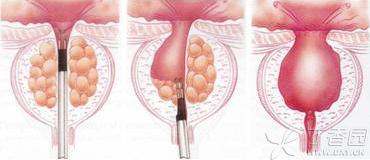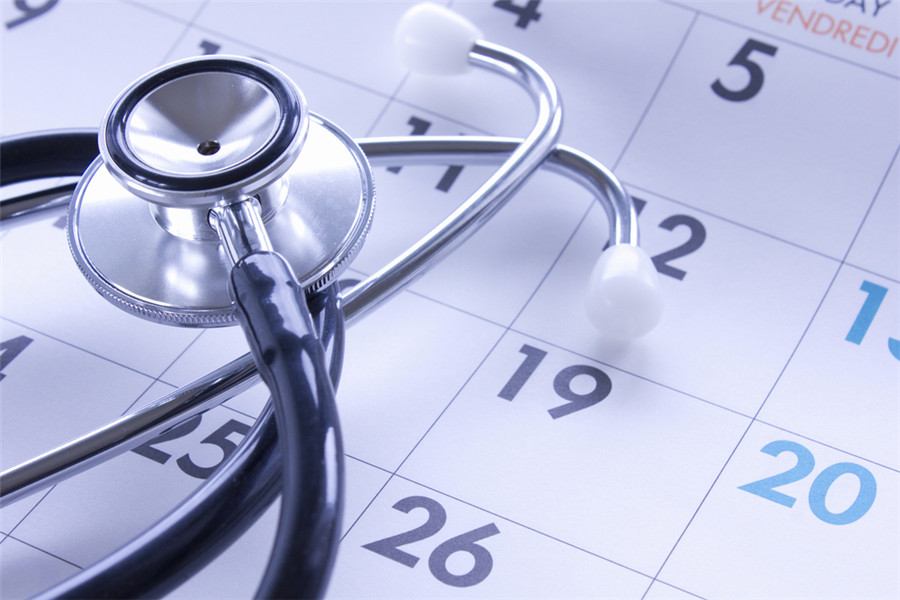1. What are the treatment methods for prostatic hyperplasia?
Treatment of benign prostatic hyperplasia includes waiting observation, drug therapy and surgical treatment.
Mild patients are suitable for observation and waiting methods. It is suitable for those patients who find prostate enlargement but have no symptoms, or have some symptoms but are not troubled by daily life. Patients need to pay attention to changes in their urination and regularly go to the outpatient department of the hospital for review.
Patients with moderate disease progression are suitable for drug therapy. The short-term goal of drug therapy is to reduce or relieve urination symptoms of patients, while the long-term goal is to delay the further development of the disease and prevent the occurrence of complications.
Severe patients are suitable for surgical treatment. However, when urination symptoms are serious enough to obviously affect the quality of life of patients, or when drug treatment is poor or even complications occur, surgical treatment can be selected.
2. Is there any hope of minimally invasive surgery to cure prostatic hyperplasia?
Transurethral resection of prostate is the most commonly used minimally invasive operation for benign prostatic hyperplasia, which is to remove hyperplastic prostate tissue through the external orifice of male urethra. This operation has been published for more than 80 years and is considered as the [gold standard] for surgical treatment of benign prostatic hyperplasia. Although many new treatment methods have emerged since then, so far there is no method that can surpass the operation from subjective or objective, immediate or long-term comparison of curative effects.
However, this does not mean that this operation is a perfect surgical treatment, and it still has certain complications and mortality. During long-term follow-up, the operation can only improve more than 70% of urination symptoms of patients with benign prostatic hyperplasia, and about 20% ~ 25% of patients need reoperation.

Description of the accompanying picture: The left picture shows that the prostate resection mirror has been inserted from the urethra. The middle figure shows the resection of hyperplastic prostate tissue during electrotomy. The right picture shows the schematic diagram of prostate urethra after electrotomy.
3. Is prostate massage helpful to the treatment of prostatic hyperplasia?
Prostate massage means that doctors use their fingers (usually index fingers) to enter the rectum through the patient’s anus and massage the adjacent prostate through the rectal wall to drain prostate fluid and promote the discharge of inflammatory substances, thus achieving the effects of improving local blood circulation and promoting the absorption and regression of inflammation.
Prostate massage is usually used for the treatment of chronic prostatitis, and there is no definite conclusion on the treatment of prostatic hyperplasia.
4. What are the training methods to improve the quality of life of patients with prostatic hyperplasia?
The spirit relaxes and frees attention from the desire to urinate.
Instruct bladder emptying techniques, such as repeated urination. Encourage patients to hold their urine properly to increase bladder capacity and prolong the intermittent time of urination.
5. Is it appropriate to control the amount of drinking water for patients with prostatic hyperplasia in how?
Prostatic hyperplasia has no special requirements on the amount of drinking water for patients. Proper restriction of drinking water can relieve frequent urination symptoms, such as time limit water at night and attending public social occasions. However, it is necessary to ensure that the daily amount of drinking water should not be less than 1500 ml. Some patients complain of frequent urination after falling asleep at night, and these patients can reduce the amount of drinking water before going to bed. Some patients drink more water daily, so they urinate more frequently-to identify whether these patients urinate frequently due to excessive drinking water, a few days of urination log can be recorded under the guidance of doctors for preliminary evaluation.
Urination diary is the patient’s own record of urination frequency, urination time, urine volume per time, accompanying urination symptoms and drinking water volume for 5-7 consecutive days, which is helpful to understand the distribution of urination frequency of patients day and night, identify nocturnal polyuria and excessive drinking water, and is especially of great diagnostic reference value for patients with nocturnal polyuria as the main symptom.
6. What dietary taboos do patients with prostatic hyperplasia have?
Although prostatic hyperplasia cannot be prevented, more attention on diet can often alleviate symptoms or prevent further deterioration of the disease, including limiting alcohol consumption, avoiding excessive intake of spicy and irritating foods, reducing intake of high cholesterol foods, avoiding overweight, drinking appropriate amount of water, etc.
Domestic scholars have studied the relationship between dyslipidemia and the International Prostate Symptom Score, which reflects the severity of urination symptoms in patients with benign prostatic hyperplasia, but the research results suggest that there is no obvious correlation between the two.
7. Which living habits can relieve the symptoms of prostatic hyperplasia?
Although prostatic hyperplasia cannot be prevented, However, more attention in daily life can often alleviate symptoms or prevent further deterioration of diseases. Including limiting alcohol consumption, keeping the lower body warm, avoiding irritating foods, reducing the intake of high cholesterol foods, avoiding overweight, exercising moderately, drinking moderate amount of water, not inhibiting urination, not sitting for a long time, The local circulation can be improved by soaking in hot water bath. Alcohol and coffee have diuretic and prostate hyperemia effects, which can increase urine volume and aggravate symptoms such as frequent and urgent urination. Therefore, the intake of alcohol and caffeine-containing beverages should be limited.
At present, there is no research on the relationship between prostatic hyperplasia and smoking. However, do you still need what reasons to quit smoking?
8. Will prostatic hyperplasia affect sexual life?
Prostatic hyperplasia itself will not affect sexual life what. However, because there is a kind of drug side effect in common prostate drugs that is prone to retrograde ejaculation, That is to say, semen will not run out of the urethra but into the bladder during ejaculation. Therefore, patients with prostatic hyperplasia taking medicine should pay attention to the instructions of the medicine. If there is any mention of the side effects of retrograde ejaculation, they should pay attention to it during sexual life.
9. How of patients with prostatic hyperplasia improves sleep quality?
Many patients complain that they urinate frequently after falling asleep at night, and even have to run to the toilet in less than half an hour at night. These patients can reduce the amount of drinking water after dinner, with special attention to limiting the amount of drinking water before going to bed. And take drugs to improve urination symptoms under the guidance of doctors.
10. Is there anything what should pay attention to when getting along with his family with prostatic hyperplasia?
If the family suffers from prostatic hyperplasia, you need to fully understand and support him, encourage them to persist in taking drugs and have regular reexamination.
This article is exclusively authorized by the author to be used by Clove Garden and refuses to reprint in any other form.

